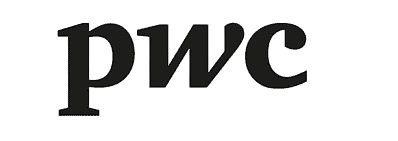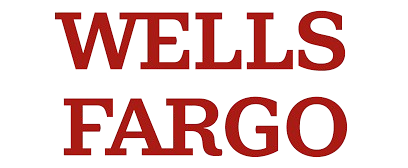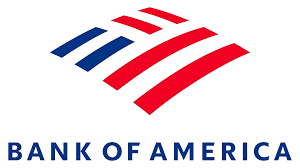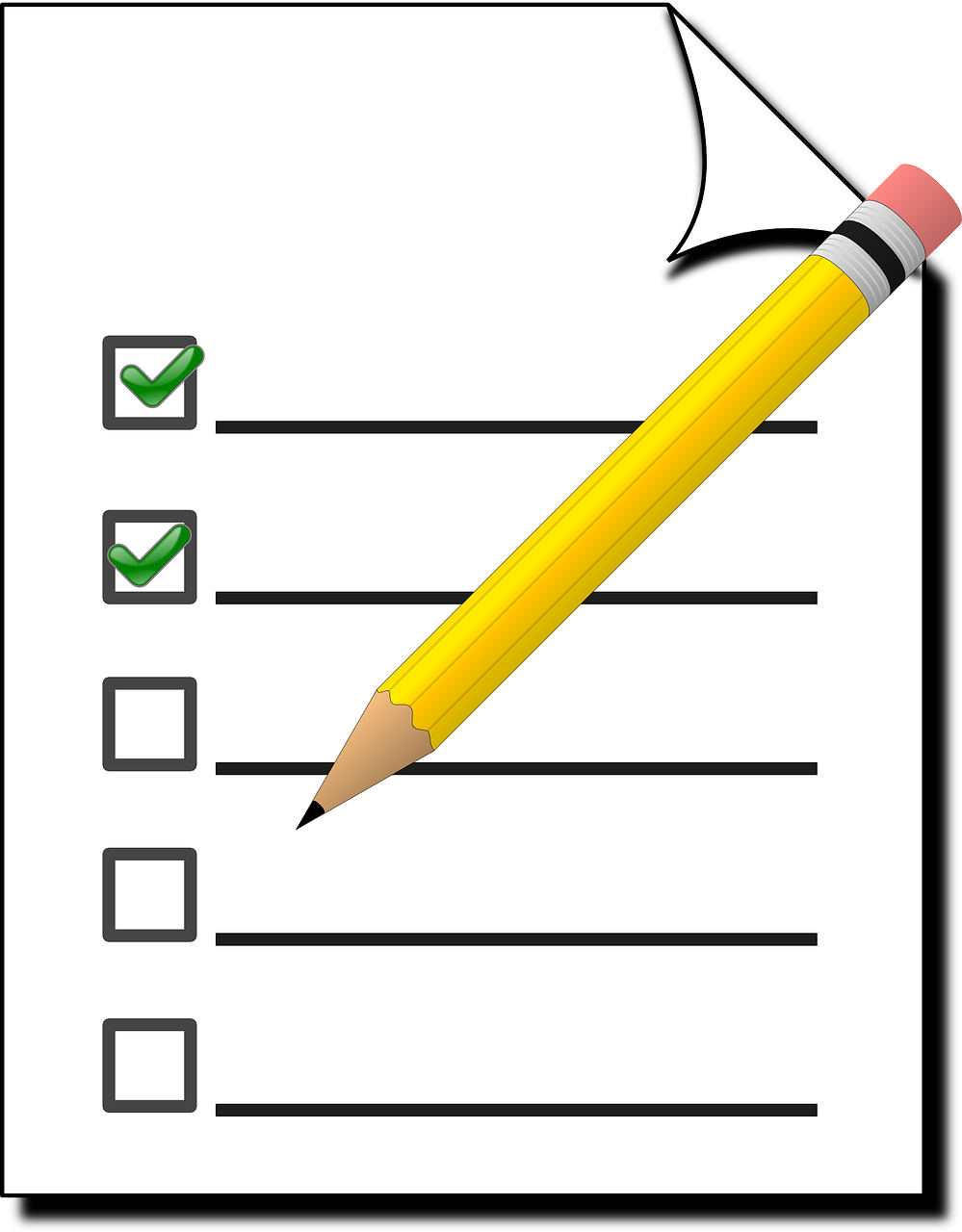SAFe Scrum Master Certification TRAINING HIGHLIGHTS IN UNITED KINGDOM
The Most Effective SAFe Scrum Master Certification Exam Preparation
SAFe Scrum Master Exam in United Kingdom: A Comprehensive Guide
The Scaled Agile Framework (SAFe) Scrum Master exam syllabus covers a wide range of topics related to the SAFe framework and the role of a Scrum Master. Here's a breakdown of the key areas you'll need to focus on:
SAFe Principles and Values:
- Understand the core principles of SAFe, such as empiricism, economic principle, transparency, inspection, and adaptation.
- Grasp the Lean Agile mindset and its application within SAFe.
SAFe Roles and Responsibilities:
- Familiarize yourself with the roles of the Scrum Master, Product Owner, Agile Team, and Release Train Engineer (RTE).
- Understand the responsibilities of each role and how they interact within the SAFe framework.
SAFe Events and Ceremonies:
- Learn about key SAFe events like PI Planning, Iteration Planning, Daily Stand-ups, Sprint Reviews, and Retrospectives.
- Understand their purpose and how they contribute to the overall SAFe process.
SAFe Artifacts:
- Familiarize yourself with SAFe artifacts such as the Vision Board, Backlog, Roadmap, Program Increment Objectives, and Kanban boards.
- Understand their purpose and how they are used within SAFe.
Agile Practices:
- Understand Agile methodologies like Scrum and Kanban, and their application within SAFe.
- Grasp concepts like timeboxing, iteration planning, continuous integration, and Kanban boards.
Lean Principles:
- Learn about Lean principles and how they can be applied to improve value delivery in SAFe.
- Understand concepts like eliminating waste, creating flow, and empowering teams.
Continuous Delivery and DevOps:
- Understand the concepts of Continuous Delivery and DevOps and how they integrate with SAFe.
- Learn about practices like continuous integration, continuous testing, and continuous deployment.
By focusing on these key areas, you can effectively prepare for the SAFe Scrum Master exam and increase your chances of success.
Exam Preparation Tips
To increase your chances of success in the SAFe Scrum Master exam, consider the following tips:
- SAFe Certification Course: Enroll in a reputable SAFe Scrum Master certification course to receive structured training and guidance from experienced instructors.
- Study Materials: Utilize official SAFe study materials, including textbooks, practice exams, and case studies.
- Practice Exams: Take practice exams to assess your knowledge and identify areas where you need to improve.
- Study Groups: Join study groups with other SAFe aspirants to discuss topics and learn from each other.
- Real-World Experience: If possible, gain practical experience working in a SAFe environment to apply your knowledge.
- Mind Mapping: Create mind maps to visualize the relationships between different SAFe concepts and improve your understanding.
- Flashcards: Use flashcards to memorize key terms, definitions, and concepts.
- Time Management: Practice effective time management during your exam preparation to ensure you can complete the exam within the allotted time.
Exam Resources
- SAFe Official Study Materials: Refer to the official SAFe study materials provided by Scaled Agile.
- Practice Exams: Look for reputable online platforms that offer practice exams specifically designed for the SAFe Scrum Master certification.
- Online Forums and Communities: Engage with the SAFe community online to connect with other learners and share experiences.
- Books and Articles: Explore books and articles related to SAFe and Scrum Master roles to supplement your learning.
Exam Success and Retake Policy
The passing score for the SAFe Scrum Master exam may vary, but it typically requires a significant level of understanding and knowledge. If you don't pass the exam on your first attempt, you may be eligible to retake it after a waiting period. The specific retake policy may vary, so check with Scaled Agile for details.
Additional Tips
- Stay Calm and Focused: Avoid getting anxious during the exam. Stay calm and focused on the questions.
- Review Frequently: Regularly review the key concepts and topics covered in the exam to reinforce your understanding.
- Positive Mindset: Maintain a positive mindset and believe in your ability to succeed.
Beyond the Basics: Deeper Dive into Exam Preparation
- Real-World Case Studies: Analyze real-world case studies of organizations that have successfully implemented SAFe. This will help you understand how SAFe principles and practices are applied in practice.
- SAFe Community Engagement: Participate in online forums and communities dedicated to SAFe. Engage in discussions, ask questions, and learn from the experiences of others.
- SAFe Summits and Conferences: Attend SAFe-related events to network with professionals, gain insights, and stay updated on the latest trends and best practices.
- Hands-On Experience: If possible, seek opportunities to participate in SAFe implementations or projects. This hands-on experience will provide valuable insights into the practical application of SAFe principles and practices.
- Mock Interviews: Conduct mock interviews with a friend or mentor to practice explaining SAFe concepts and answering potential exam questions. This can help you build confidence and improve your communication skills.
By incorporating these additional tips into your preparation, you can further enhance your understanding of SAFe and increase your chances of success in the SAFe Scrum Master exam.
HIGH DEMAND FOR SAFE (SCALED AGILE FRAMEWORK) PROFESSIONALS IN UNITED KINGDOM
SAFe Scrum Master Certification Among the Highest Paying Certifications





















SAFe Scrum Master Exam Preparation in United Kingdom: A Comprehensive Guide
Introduction
Becoming a SAFe Scrum Master is a significant step towards advancing your career in Agile project management. This certification validates your knowledge and skills in facilitating Agile teams within a Scaled Agile Framework (SAFe). To ace the SAFe Scrum Master exam, thorough preparation is essential. This guide will provide you with valuable insights, resources, and strategies to help you succeed.
The Scaled Agile Framework (SAFe) has gained significant prominence in the software development industry, and the role of a SAFe Scrum Master has become increasingly important. Obtaining a SAFe Scrum Master certification can enhance your career prospects and demonstrate your expertise in agile methodologies.
Here's a summary of the key points:
- Understanding the SAFe Scrum Master Role: A SAFe Scrum Master serves as a catalyst for Agile transformation, facilitating Agile teams, coaching and mentoring, collaborating with stakeholders, supporting PI planning, and driving continuous improvement.
- SAFe Scrum Master Exam Syllabus: The exam covers SAFe principles, roles and responsibilities, events and ceremonies, artifacts, Agile practices, Lean principles, and Continuous Delivery and DevOps.
- Exam Preparation Tips: Consider taking a SAFe Scrum Master course, utilizing study materials, practicing with sample exams, joining study groups, and engaging with the SAFe community.
- Benefits of SAFe Scrum Master Certification: The certification can enhance your career prospects, increase job security, improve job performance, and expand your professional network.
Additional Tips:
- Stay updated with the latest developments in SAFe and Agile methodologies. This includes following SAFe blogs, attending webinars, and participating in online communities.
- Practice regularly and seek feedback on your performance. Take advantage of practice exams, quizzes, and mock exams to assess your knowledge and identify areas for improvement.
- Network with other SAFe professionals. Building relationships with other certified SAFe Scrum Masters can provide you with support, mentorship, and opportunities for collaboration.
- Believe in yourself and your ability to succeed. With dedication and effective preparation, you can achieve the SAFe Scrum Master certification and unlock new career opportunities.
In addition to the points mentioned above, here are some other factors to consider:
- Cost: The cost of obtaining a SAFe Scrum Master certification can vary depending on the training provider, course format, and location.
- Time commitment: Preparing for and taking the SAFe Scrum Master exam requires a significant time commitment.
- Certification maintenance: SAFe Scrum Masters are required to complete continuing education units (CEUs) every three years to maintain their certification.
Despite these factors, the benefits of obtaining a SAFe Scrum Master certification often outweigh the costs. The certification can provide you with valuable skills and knowledge that can help you advance your career and contribute to the success of Agile projects.
SAFe Scrum Master Exam Rules and Details
Exam Format:
- Multiple-choice questions: The exam consists of multiple-choice questions, requiring you to select the most appropriate answer from given options.
- Time limit: You have a fixed amount of time to complete the exam. The exact duration may vary, so check the official exam guidelines for the latest information.
- Passing score: A minimum passing score is required to obtain the SAFe Scrum Master certification. The exact passing score may vary, but it's typically around 70-75%.
Exam Content:
The exam covers a wide range of topics related to the SAFe Scrum Master role. Key areas include:
- SAFe Principles and Values: Understanding the core principles and values of the Scaled Agile Framework.
- SAFe Roles and Responsibilities: Knowledge of the various roles within SAFe, particularly the responsibilities of a Scrum Master.
- SAFe Events and Ceremonies: Familiarity with the key events and ceremonies that occur in a SAFe context, such as PI Planning, Iteration Planning, and Daily Stand-ups.
- SAFe Artifacts: Understanding the purpose and usage of SAFe artifacts, like the Vision Board, Backlog, and Roadmap.
- Agile Practices: Knowledge of Agile methodologies, including Scrum and Kanban, and their application within SAFe.
- Lean Principles: Understanding Lean principles and how they can be applied to improve value delivery in SAFe.
- Continuous Delivery and DevOps: Knowledge of Continuous Delivery and DevOps practices within SAFe.
Exam Preparation:
To prepare for the SAFe Scrum Master exam, consider the following strategies:
- SAFe Certification Course: Enroll in a SAFe Scrum Master certification course to receive structured training and guidance from experienced instructors.
- Study Materials: Utilize official SAFe study materials, including textbooks, practice exams, and case studies.
- Practice Exams: Take practice exams to assess your knowledge and identify areas where you need to improve.
- Study Groups: Join study groups with other SAFe aspirants to discuss topics and learn from each other.
- Real-World Experience: If possible, gain practical experience working in a SAFe environment to apply your knowledge.
Exam Retakes:
If you don't pass the exam on your first attempt, you may be eligible to retake it after a waiting period. The specific waiting period and retake policies may vary, so check the official SAFe guidelines for details.
Additional Tips:
- Time Management: Practice effective time management during your exam preparation to ensure you can complete the exam within the allotted time.
- Stay Calm and Focused: Avoid getting anxious during the exam. Stay calm and focused on the questions.
- Review Frequently: Regularly review the key concepts and topics covered in the exam to reinforce your understanding.
Beyond the Basics:
While the core concepts and topics are essential, here are some additional tips to enhance your exam preparation:
- SAFe Community Engagement:
- Online forums: Participate in online forums and communities dedicated to SAFe. Engage in discussions, ask questions, and learn from the experiences of others.
- SAFe Summits and Conferences: Attend SAFe-related events to network with professionals, gain insights, and stay updated on the latest trends and best practices.
- Real-World Case Studies:
- Analyze case studies: Study real-world case studies of organizations that have successfully implemented SAFe. Analyze their challenges, solutions, and outcomes to gain practical insights.
- SAFe Implementation Experience:
- Hands-on experience: If possible, seek opportunities to participate in SAFe implementations or projects. This hands-on experience will provide valuable insights into the practical application of SAFe principles and practices.
- Mind Mapping and Visualization:
- Visual aids: Create mind maps or visual diagrams to organize the key concepts and relationships within SAFe. This can help you visualize the big picture and better understand the connections between different elements.
- Mock Interviews:
- Practice interviews: Conduct mock interviews with a friend or mentor to practice explaining SAFe concepts and answering potential exam questions. This can help you build confidence and improve your communication skills.
- Stay Updated:
- SAFe updates: Keep up-to-date with the latest SAFe updates, changes, and releases. Stay informed about any modifications to the exam content or format.
- Positive Mindset:
- Confidence and belief: Maintain a positive mindset and believe in your ability to succeed. Approach the exam with confidence and a growth mindset.
- Self-Care:
- Prioritize well-being: Take care of your physical and mental health during your preparation. Ensure you get enough rest, exercise, and nutrition to optimize your performance.
By incorporating these additional tips into your preparation, you can further enhance your understanding of SAFe and increase your chances of success in the SAFe Scrum Master exam.
WHY SCHOLARACAD FOR SAFe Scrum Master Certification TRAINING IN UNITED KINGDOM
The ScholarAcad Advantage
SAFe Scrum Master Course Cost in United Kingdom: A Comprehensive Guide
When considering pursuing a SAFe Scrum Master certification in United Kingdom, it's essential to have a clear understanding of the various costs involved. This guide will provide you with detailed information on the different fees and expenses you can expect to encounter.
Course Fees and Training Costs
The primary cost associated with obtaining a SAFe Scrum Master certification is the course fee. The cost of the course can vary depending on several factors, including:
- Training provider: Different training providers may charge varying fees. Reputable training organizations often offer competitive pricing.
- Course format: The format of the course, whether it's classroom-based, online, or a hybrid approach, can influence the cost.
- Location: The location of the training can impact the overall cost due to factors such as venue rental, instructor fees, and local expenses.
- Course length: Longer courses with more comprehensive content may have higher fees compared to shorter courses.
- Additional services: Some training providers may offer additional services, such as post-course support or access to exclusive resources, which can increase the overall cost.
Exam Fees
In addition to the course fees, you'll need to pay an exam fee to take the SAFe Scrum Master certification exam. The exam fee is typically set by the certifying body, Scaled Agile. Factors that can influence the exam fee include:
- Exam format: The format of the exam, whether it's online or in-person, can affect the fee.
- Exam retake fees: If you need to retake the exam, you may be required to pay additional fees.
Study Materials and Resources
To effectively prepare for the SAFe Scrum Master exam, you may need to invest in study materials and resources. These can include textbooks, practice exams, and online learning platforms. While these resources are not mandatory, they can significantly aid in your exam preparation. The cost of study materials can vary depending on the provider and the specific resources you choose.
Certification Maintenance Fees
Once you obtain your SAFe Scrum Master certification, you may be required to pay annual maintenance fees to keep your certification active. These fees are typically used to support the ongoing development and maintenance of the SAFe framework. The amount of the maintenance fees may vary depending on the certifying body.
Cost-Effective Options
If you're looking to minimize the cost of your SAFe Scrum Master certification, consider the following options:
- Online courses: Online courses often offer more affordable options compared to classroom-based training.
- Group discounts: Some training providers offer discounts for group registrations.
- Self-paced learning: If you are a self-directed learner, you may find self-paced online courses to be a more cost-effective option.
- Government funding: In some cases, government funding or grants may be available to help offset the cost of professional certifications.
- Negotiation: If you're considering a classroom-based course, you may be able to negotiate the price with the training provider.
Factors to Consider When Choosing a Training Provider
When selecting a training provider, consider the following factors:
- Reputation: Look for training providers with a strong reputation and positive reviews.
- Instructor expertise: Ensure that the instructors have the necessary expertise and experience in SAFe.
- Course curriculum: Verify that the course curriculum aligns with the latest SAFe standards.
- Student support: Assess the level of student support provided by the training provider, including access to instructors and resources.
- Certification success rate: Consider the training provider's success rate in preparing students for the SAFe Scrum Master exam.
Conclusion
The cost of obtaining a SAFe Scrum Master certification in United Kingdom can vary depending on several factors. By carefully considering the course fees, exam fees, study materials, and certification maintenance costs, you can make an informed decision and choose the most suitable option for your budget and learning preferences.
SAFe Scrum Master Course Fees and Structure in United Kingdom
Understanding the Course Fees
The cost of a SAFe Scrum Master course in United Kingdom can vary depending on several factors, including:
- Training provider: Different training providers may charge varying fees. Reputable training organizations often offer competitive pricing.
- Course format: The format of the course, whether it's classroom-based, online, or a hybrid approach, can influence the cost.
- Location: The location of the training can impact the overall cost due to factors such as venue rental, instructor fees, and local expenses.
- Course length: Longer courses with more comprehensive content may have higher fees compared to shorter courses.
- Additional services: Some training providers may offer additional services, such as post-course support or access to exclusive resources, which can increase the overall cost.
Typical Course Structure
A typical SAFe Scrum Master course in United Kingdom is designed to provide participants with a comprehensive understanding of the Scaled Agile Framework (SAFe) and the role of a Scrum Master within a SAFe environment. The course structure may vary slightly depending on the training provider, but it generally includes the following elements:
- Introduction to SAFe: This section covers the fundamental principles, values, and concepts of SAFe.
- SAFe roles and responsibilities: Participants will learn about the various roles within SAFe, including the Scrum Master, Product Owner, and Release Train Engineer.
- SAFe events and ceremonies: The course will delve into the key events and ceremonies that occur in a SAFe context, such as PI Planning, Iteration Planning, and Daily Stand-ups.
- SAFe artifacts: Participants will learn about the different artifacts used in SAFe, including the Vision Board, Backlog, and Roadmap.
- Agile practices: The course will cover Agile methodologies, such as Scrum and Kanban, and their application within SAFe.
- Lean principles: Participants will explore Lean principles and how they can be applied to improve value delivery in SAFe.
- Continuous delivery and DevOps: The course will discuss the concepts of Continuous Delivery and DevOps and their integration with SAFe.
Course Duration
The duration of a SAFe Scrum Master course in United Kingdom typically ranges from 2 to 3 days. However, some training providers may offer longer courses with more in-depth coverage.
Course Fees and Payment Options
The exact course fees can vary widely. It's recommended to contact specific training providers in United Kingdom to obtain accurate pricing information. Payment options may include:
- Direct payment: You can typically pay the course fee directly to the training provider.
- Corporate billing: If you're representing a company, you may be able to arrange for corporate billing.
- Financing options: Some training providers may offer financing options or payment plans.
Additional Considerations
When choosing a SAFe Scrum Master course in United Kingdom, consider the following factors:
- Instructor expertise: Ensure that the instructors have the necessary expertise and experience in SAFe.
- Course materials: Assess the quality and comprehensiveness of the course materials provided.
- Student support: Look for training providers that offer adequate student support, such as access to instructors and online resources.
- Certification exam: Verify if the course includes preparation for the SAFe Scrum Master certification exam.
By carefully considering these factors and comparing the fees and course structures offered by different training providers, you can choose the most suitable SAFe Scrum Master course in United Kingdom to meet your learning and career goals.
SAFe Scrum Master Certification CERTIFICATION COURSE REVIEWS IN UNITED KINGDOM
Our Learners Love Us

Patric

John

Steve Nouri

Edward A

Adam Nasir

Michael Ryaboy

Pete

Tarzine Rack
SAFe Scrum Master Certification COURSE CURRICULUM
1. Module 1: Introduction of Scrum in SAFe
- Concepts of Basic Agile Development
- Basics of Scrum
- Establish Agile Team in SAFe Enterprises
2. Module 2: Scrum Master Role Characterization
- Scrum Master Responsibilities
- Effective Scrum Master Characteristics
- High-performing Teams
- Use Powerful Questions to Coach Agile Team
- Team Events
- Cross Team Collaboration
- Resolve Conflicts in Teams
3. Module 3: Experience PI Planning
- Basics of PI Planning
- Drafting PI Planning
- Business Value and Final Plans
- PI Objectives and Final Plan Review
- Facilitate PI Planning
4. Module 4: Facilitate Iteration Execution
- Plan Iteration
- Track Progress of Iteration
- Refine Backlogs
- Facilitation Iteration Reviews
- Implement Relentless Improvement
- Supports Release-on-Demand and DevOps
5. Module 5: Finish PI
- Coach IP Iteration
- Preparing Team to Inspect & Adapt Event
6. Module 6: Practice SAFe
- SAFe Practice in Organizations
View More
SAFe Scrum Master Certification CERTIFICATION PATH
Your Path to Acing Your SAFe Scrum Master Certification Exam

Grasp the overarching structure and how different components interconnect.
Understand the Scrum framework, its roles, events, artifacts, and ceremonies.
Grasp the principles and practices of Kanban for visualizing work and flow.
Understand the responsibilities of a SAFe Scrum Master.
Believe in continuous improvement and learning.
Participate in simulations, case studies, and practical exercises.
Practice with Mock Exams and Take your exam.
SAFe Scrum Master Practice Test in United Kingdom: Overall Exam Experience
SAFe Scrum Master practice tests are valuable resources to help you prepare for the official certification exam in the United Kingdom. These tests can assess your knowledge, identify areas for improvement, and familiarize you with the exam format.
Here are some options for SAFe Scrum Master practice tests in the UK:
- Scaled Agile website: Scaled Agile, the official certifying body, offers a free SAFe Scrum Master practice test on their website. This test provides 20 questions and can help you gauge your understanding of core concepts.
- TheScrumMaster.co.uk: This website offers a free SAFe Scrum Master practice exam with 20 questions and detailed feedback for each answer.
- Agilemania: Agilemania provides a free SAFe Scrum Master practice assessment that covers a range of topics and allows you to track your progress over time.
- Other online platforms: Several online platforms offer SAFe Scrum Master practice tests, often as part of paid courses or subscription packages.
When taking a practice test, consider the following tips:
- Time management: Practice taking the test under timed conditions to simulate the actual exam environment.
- Review incorrect answers: Carefully review the explanations for incorrect answers to understand the concepts and improve your knowledge.
- Identify areas of weakness: Use the practice test to identify areas where you need to focus your studies.
- Take multiple practice tests: The more practice tests you take, the better prepared you will be for the actual exam.
- Seek feedback: If possible, get feedback from others or mentors on your performance to gain insights and identify areas for improvement.
Remember, the goal of taking practice tests is to assess your knowledge, identify areas for improvement, and build confidence. By utilizing these resources and practicing effectively, you can increase your chances of success in the SAFe Scrum Master exam.
Additional resources:
- SAFe Scrum Master Study Guide: The official study guide for the SAFe Scrum Master certification provides comprehensive coverage of the exam topics and includes practice questions.
- SAFe Community forums: Online forums can be a valuable resource for discussing SAFe concepts, sharing practice test experiences, and getting help from other SAFe practitioners.
Mock Exams
- Simulated Exam Environment: Mock exams are designed to simulate the actual exam conditions, including time constraints, question formats, and the overall exam experience. Taking mock exams can help you get used to the exam format and reduce exam-day anxiety.
- Identify Weaknesses: By taking mock exams, you can identify areas where you need to focus your studies. Pay attention to the questions you find challenging and review those topics in more detail.
- Build Confidence: Practicing with mock exams can boost your confidence and improve your performance on the actual exam. The more you practice, the more comfortable you'll become with the exam format and content.
Practice Set
- Comprehensive Coverage: A practice set typically includes a variety of questions covering different topics from the SAFe Scrum Master exam syllabus. This can help you assess your knowledge across a wide range of areas and identify any gaps in your understanding.
- Self-Assessment: Using a practice set can help you self-assess your progress and identify areas for improvement. You can track your performance over time and see how your knowledge is growing.
Additional Tips
- Review Frequently: Regularly review the practice test questions and your answers to reinforce your understanding. The more you review, the better you'll retain the information.
- Time Management: Practice effective time management during your practice sessions to simulate exam conditions. This will help you develop strategies for pacing yourself during the actual exam.
- Seek Feedback: If possible, get feedback on your practice test performance from a mentor or instructor. They can provide valuable insights and guidance on areas where you need to improve.
- Stay Updated: Keep up-to-date with any changes to the SAFe Scrum Master exam or the SAFe framework itself. The exam content may evolve over time, so it's important to stay informed about the latest developments.
By utilizing a combination of practice tests, sample questions, mock exams, and practice sets, you can effectively prepare for the SAFe Scrum Master exam and increase your chances of success.
The Importance of Practice Tests for SAFe Scrum Master Exam Preparation
Practice tests play a crucial role in preparing for the SAFe Scrum Master exam. They offer several benefits that can significantly enhance your chances of success:
- Familiarization with Exam Format: Practice tests expose you to the format and structure of the actual exam, helping you get comfortable with the question types, time constraints, and overall exam environment. This familiarity can reduce exam-day anxiety and improve your performance.
- Assessment of Knowledge: Practice tests provide a valuable assessment of your knowledge and understanding of the SAFe Scrum Master exam syllabus. By identifying areas where you are strong and where you need to improve, you can focus your studies more effectively.
- Identification of Weaknesses: Practice tests can help you pinpoint your weaknesses and address them proactively. By understanding the topics you struggle with, you can allocate more time to review those areas and improve your knowledge.
- Time Management Practice: Practicing with timed tests can help you develop effective time management strategies for the actual exam. This is especially important given the time constraints of the SAFe Scrum Master exam.
- Building Confidence: Successfully completing practice tests can boost your confidence and improve your self-esteem. This confidence can be invaluable on exam day, helping you approach the exam with a positive mindset.
- Identifying Knowledge Gaps: Practice tests can highlight any gaps in your understanding of SAFe concepts. By identifying these gaps, you can fill them in through further study and review.
- Measuring Progress: Tracking your performance on practice tests over time can help you measure your progress and stay motivated. Seeing improvement can be a powerful motivator to continue your studies.
- Simulating Exam Conditions: Practice tests can simulate the pressure and intensity of the actual exam. This can help you prepare mentally and emotionally for the exam.
In conclusion, practice tests are an essential tool for SAFe Scrum Master exam preparation. By utilizing practice tests effectively, you can enhance your knowledge, build confidence, and increase your chances of success in the exam.
WHAT YOU WILL LEARN
Learning Objectives
SAFe Scrum Master Certification: Grab Opportunities Faster
Career Advancement and Professional Growth
- Increased Job Opportunities: The demand for skilled SAFe Scrum Masters is growing rapidly. By obtaining this certification, you can open doors to new career opportunities and increase your earning potential.
- Enhanced Job Security: In today's competitive job market, having a SAFe Scrum Master certification can make you a more valuable asset to organizations. It demonstrates your expertise in Agile methodologies and your ability to contribute effectively to complex projects.
- Career Progression: The SAFe Scrum Master certification can serve as a stepping stone towards higher-level roles within Agile organizations. It can position you for leadership positions, such as Agile Coaches or Agile Transformation Consultants.
- Salary Increase: Studies have shown that individuals with SAFe Scrum Master certifications often command higher salaries compared to those without the certification. This is due to the increased value and expertise they bring to organizations.
Professional Development and Skill Enhancement
- Deepened Understanding of Agile: The SAFe Scrum Master certification provides a comprehensive understanding of Agile principles, practices, and frameworks. This knowledge can enhance your ability to lead and support Agile teams effectively.
- Improved Leadership Skills: Becoming a SAFe Scrum Master develops essential leadership skills, such as facilitation, conflict resolution, and team building. These skills are valuable not only in Agile environments but also in various other professional contexts.
- Enhanced Problem-Solving Abilities: SAFe Scrum Master certification equips you with the tools and techniques to address challenges and solve problems in Agile projects. This can make you a more effective problem-solver and decision-maker.
- Continuous Learning: The SAFe framework is constantly evolving. By obtaining a SAFe Scrum Master certification, you commit to continuous learning and staying updated with the latest Agile trends and best practices.
Organizational Benefits
- Improved Project Outcomes: Organizations that employ SAFe Scrum Masters often experience improved project outcomes, such as increased productivity, higher quality, and faster time-to-market. This is due to the effective leadership and facilitation provided by certified Scrum Masters.
- Enhanced Collaboration and Teamwork: SAFe Scrum Masters foster a collaborative and team-oriented environment, leading to better communication, increased engagement, and improved team performance.
- Increased Adaptability: SAFe Scrum Masters help organizations become more adaptable to change by promoting Agile principles and practices. This can be crucial in today's rapidly evolving business landscape.
- Improved Customer Satisfaction: By delivering value to customers faster and more efficiently, organizations that leverage SAFe Scrum Masters can improve customer satisfaction and loyalty.
Additional Benefits
- Networking Opportunities: SAFe Scrum Master certification can provide opportunities to connect with other professionals in the Agile community. This can lead to valuable networking relationships and potential career advancements.
- Recognition and Credibility: Obtaining a SAFe Scrum Master certification can enhance your professional reputation and credibility within the Agile community. It demonstrates your commitment to professional development and your expertise in Agile methodologies.
- Personal Satisfaction: The sense of accomplishment and personal satisfaction that comes with achieving a SAfe Scrum Master certification can be highly rewarding. It validates your skills and knowledge and can boost your self-confidence.
Beyond the Basics
In addition to the benefits mentioned above, obtaining a SAFe Scrum Master certification can also:
- Enhance your ability to work effectively in complex, large-scale Agile projects.
- Improve your understanding of Agile governance and organizational transformation.
- Provide you with a framework for implementing and scaling Agile practices within your organization.
- Help you become a more effective leader and mentor for Agile teams.
- Open doors to new career opportunities and advancements within the Agile field.
Conclusion
The SAFe Scrum Master certification offers a wide range of benefits for both individuals and organizations. By obtaining this certification, you can enhance your career prospects, develop valuable skills, contribute to organizational success, and gain personal satisfaction. If you are passionate about Agile project management and looking to advance your career, the SAFe Scrum Master certification is a worthwhile investment.
WHO CAN ATTEND THE SAFe Scrum Master Certification CERTIFICATION TRAININGN IN UNITED KINGDOM
Who This Course Is For

PREREQUISITES FOR SAFe Scrum Master Certification IN UNITED KINGDOM
Prerequisites and Eligibility
Familiarity with Agile principles and the Scrum framework is beneficial.
Completion of the SAFe for Teams course is required to establish a foundation in SAFe concepts.
Passing the SAFe Scrum Master exam (SSM) validates your understanding of SAFe and Scrum principles.

SAFe Scrum Master Certification CERTIFICATION FAQS
1. What is a SAFe Scrum Master?
A SAFe Scrum Master is a professional who facilitates Agile teams within the Scaled Agile Framework (SAFe) to deliver value efficiently. They coach teams, remove impediments, and ensure alignment with SAFe principles.
2. What is the difference between a Scrum Master and a SAFe Scrum Master?
A traditional Scrum Master focuses on a single team, while a SAFe Scrum Master works within the broader SAFe framework, often supporting multiple teams and aligning them with the Program Increment (PI) objectives.
3. What are the key responsibilities of a SAFe Scrum Master?
- Facilitating Agile ceremonies (e.g., Sprint Planning, Daily Standups, Retrospectives).
- Removing impediments for the team.
- Coaching teams on Agile principles and practices.
- Supporting the Product Owner in backlog refinement.
- Ensuring alignment with PI objectives.
4. What skills are required to become a successful SAFe Scrum Master?
- Strong facilitation and communication skills.
- Deep understanding of Agile and SAFe principles.
- Problem-solving and conflict resolution abilities.
- Leadership and coaching skills.
- Knowledge of Lean-Agile practices.
5. Is certification necessary to become a SAFe Scrum Master?
While not mandatory, certification (e.g., SAFe Scrum Master Certification) is highly recommended as it validates your knowledge and increases employability.
6. What is the SAFe Scrum Master Certification?
The SAFe Scrum Master Certification (SSM) is a credential offered by Scaled Agile, Inc. It demonstrates expertise in applying Scrum within the SAFe framework.
7. How do I get certified as a SAFe Scrum Master?
- Attend the official SAFe Scrum Master course (2-day training).
- Pass the online exam.
- Maintain certification through continuous learning and renewal.
8. What is the cost of the SAFe Scrum Master certification?
The cost is typically around $995-$1,295 for the 2-day course, depending on the training provider.
9. How long does the SAFe Scrum Master certification last?
The certification is valid for 1 year and requires renewal annually by earning 10 continuing education units (SEUs) and paying a renewal fee.
10. What is the average salary of a SAFe Scrum Master?
The average salary varies by location and experience:
- USA : $90,000–$120,000 per year.
- India : ₹10–20 lakhs per year.
- Europe : €60,000–€90,000 per year.
11. What industries hire SAFe Scrum Masters?
Industries include:
- IT and software development.
- Financial services.
- Healthcare.
- Manufacturing.
- Government and defense.
12. What is the career path for a SAFe Scrum Master?
Junior Scrum Master → SAFe Scrum Master → Release Train Engineer (RTE) → Agile Coach → Transformation Lead.
13. Can a SAFe Scrum Master work remotely?
Yes, many organizations allow remote work, especially in tech companies or those with distributed teams.
14. What tools should a SAFe Scrum Master be familiar with?
- Jira, Azure DevOps, or Rally for Agile project management.
- Confluence or SharePoint for documentation.
- Collaboration tools like Slack, Microsoft Teams, or Zoom
15. What is a Release Train Engineer (RTE), and how does it relate to a SAFe Scrum Master?
An RTE facilitates Agile Release Trains (ARTs) at the program level, coordinating multiple teams. A SAFe Scrum Master can advance to become an RTE.
16. What is the difference between a SAFe Scrum Master and an Agile Coach?
A SAFe Scrum Master focuses on team-level execution, while an Agile Coach works at the organizational level to drive Agile transformation.
17. How does SAFe differ from other Agile frameworks like Scrum or Kanban?
SAFe is a scaled framework designed for large enterprises, integrating Scrum, Kanban, and Lean principles to coordinate multiple teams.
18. What challenges do SAFe Scrum Masters face?
- Resistance to Agile adoption.
- Balancing team autonomy with organizational goals.
- Managing dependencies across teams.
- Aligning with PI objectives.
19. How important is experience in becoming a SAFe Scrum Master?
Experience in Agile methodologies and team facilitation is crucial. Prior roles as a Scrum Master, Project Manager, or Team Lead are beneficial.
20. Can a non-technical person become a SAFe Scrum Master?
Yes, but understanding the technical aspects of the team’s work can enhance effectiveness.
21. What is a Program Increment (PI) in SAFe?
A PI is a timebox (typically 8–12 weeks) during which multiple Agile teams work together to deliver value. The SAFe Scrum Master ensures their team contributes to PI objectives.
22. What is PI Planning, and what role does the SAFe Scrum Master play?
PI Planning is a key event where teams plan work for the upcoming PI. The SAFe Scrum Master facilitates team preparation, participation, and follow-through.
23. How does a SAFe Scrum Master handle conflicts within the team?
By fostering open communication, mediating discussions, and helping the team find collaborative solutions.
24. What is the role of metrics in a SAFe Scrum Master’s job?
Metrics (e.g., velocity, burndown charts) help track progress, identify bottlenecks, and improve team performance
25. How does a SAFe Scrum Master contribute to continuous improvement?
By facilitating retrospectives, encouraging feedback loops, and promoting a culture of learning and adaptation.
26. What is the importance of servant leadership for a SAFe Scrum Master?
Servant leadership emphasizes empowering the team, removing obstacles, and fostering a collaborative environment.
27. How does a SAFe Scrum Master interact with the Product Owner?
They collaborate to ensure the backlog is well-refined, priorities are clear, and the team delivers value consistently.
28. What is the role of a SAFe Scrum Master in DevOps?
They support collaboration between development and operations teams to enable continuous delivery and integration.
29. Can a SAFe Scrum Master work with multiple teams?
Yes, they often support multiple teams, especially in large-scale Agile implementations.
30. What is the typical team size managed by a SAFe Scrum Master?
5–11 members per team, following the Scrum guidelines.
31. How does a SAFe Scrum Master handle scope changes?
By working with the Product Owner and stakeholders to assess impact, prioritize changes, and adjust plans accordingly.
32. What is the role of a SAFe Scrum Master in risk management?
They identify risks early, escalate when necessary, and help the team mitigate them.
33. How does a SAFe Scrum Master foster innovation?
By encouraging experimentation, supporting new ideas, and creating a safe environment for learning.
34. What soft skills are critical for a SAFe Scrum Master?
Empathy, active listening, adaptability, and emotional intelligence
35. How does a SAFe Scrum Master measure success?
Through team performance metrics, stakeholder satisfaction, and alignment with business goals.
36. What is the role of a SAFe Scrum Master in a distributed team?
Facilitating communication, ensuring alignment, and addressing challenges unique to remote work.
37. How does a SAFe Scrum Master stay updated with industry trends?
By attending conferences, joining Agile communities, reading blogs/books, and participating in webinars.
38. What are the common mistakes made by new SAFe Scrum Masters?
- Micromanaging the team.
- Focusing too much on processes rather than outcomes.
- Ignoring organizational culture and resistance.
39. How does a SAFe Scrum Master handle burnout in the team?
By promoting work-life balance, managing workload, and fostering a supportive team culture.
40. What is the role of a SAFe Scrum Master in Lean Portfolio Management?
They ensure the team’s work aligns with portfolio objectives and strategic themes.
41. .How does a SAFe Scrum Master contribute to value delivery?
By ensuring the team focuses on delivering high-priority features and meeting PI objectives.
42. What is the difference between SAFe 6.0 and earlier versions?
SAFe 6.0 introduced enhancements like the Continuous Learning Culture competency and improved guidance for Business Agility
43. What is the role of a SAFe Scrum Master in a Waterfall-to-Agile transition?
They guide the team in adopting Agile practices, address resistance, and ensure smooth integration into the SAFe framework.
44. How does a SAFe Scrum Master handle dependencies between teams?
By coordinating with other Scrum Masters and stakeholders to resolve cross-team dependencies.
45. What is the role of a SAFe Scrum Master in Agile maturity assessments?
They help evaluate the team’s Agile practices and identify areas for improvement.
46. How does a SAFe Scrum Master balance flexibility with deadlines?
By prioritizing work, managing scope, and ensuring the team stays focused on delivering value.
47. What is the role of a SAFe Scrum Master in fostering psychological safety?
They create an environment where team members feel safe to share ideas, take risks, and admit mistakes.
48. How does a SAFe Scrum Master handle resistance to change?
By understanding concerns, providing education, and demonstrating the benefits of Agile practices.
49. What is the role of a SAFe Scrum Master in fostering a Lean-Agile mindset?
They promote principles like customer focus, continuous improvement, and waste reduction.
50. What is the future outlook for SAFe Scrum Masters?
As organizations increasingly adopt Agile and SAFe, the demand for skilled SAFe Scrum Masters is expected to grow, making it a promising career choice.
View More
1. What are the key benefits of becoming a SAFe Scrum Master?
- Career growth in Agile and SAFe environments.
- Opportunities to lead and coach teams.
- Enhanced problem-solving and leadership skills.
- High demand for skilled SAFe professionals.
- Competitive salary and job security.
2. How does being a SAFe Scrum Master benefit my career?
It opens doors to roles like Release Train Engineer (RTE), Agile Coach, or Transformation Lead, offering upward mobility in Agile and Lean-Agile careers.
3. Does being a SAFe Scrum Master improve my leadership skills?
Yes, it enhances leadership abilities through servant leadership, team facilitation, and conflict resolution.
4. Is the SAFe Scrum Master role financially rewarding?
Yes, SAFe Scrum Masters earn competitive salaries due to their specialized skills in scaling Agile practices.
5. What personal satisfaction comes from being a SAFe Scrum Master?
Helping teams succeed, fostering collaboration, and seeing tangible results from your efforts provide immense satisfaction.
6. How does being a SAFe Scrum Master enhance my communication skills?
You’ll constantly interact with teams, stakeholders, and leadership, improving your ability to communicate effectively at all levels.
7. Does being a SAFe Scrum Master offer flexibility in work?
Yes, many organizations allow remote work, especially for experienced SAFe Scrum Masters managing distributed teams.
8. What are the networking benefits of being a SAFe Scrum Master?
You’ll collaborate with cross-functional teams, Agile coaches, RTEs, and leaders, expanding your professional network
9. How does being a SAFe Scrum Master contribute to organizational success?
By ensuring teams deliver value efficiently, aligning with business goals, and driving continuous improvement
10. Does being a SAFe Scrum Master make me more adaptable?
Yes, working in dynamic Agile environments helps you adapt quickly to changes and challenges.
11. What are the benefits of SAFe Scrum Master certification?
- Validates your expertise in SAFe and Agile principles.
- Increases employability and earning potential.
- Provides access to SAFe communities and resources.
12. How does being a SAFe Scrum Master foster innovation?
By encouraging experimentation, supporting new ideas, and creating an environment where creativity thrives.
13. Does being a SAFe Scrum Master improve team performance?
Yes, by removing impediments, facilitating ceremonies, and coaching teams on best practices.
14. How does being a SAFe Scrum Master promote work-life balance?
The role emphasizes servant leadership and team empowerment, reducing micromanagement and stress.
15. What are the mental health benefits of being a SAFe Scrum Master?
Fostering psychological safety and resolving conflicts can create a positive work environment, benefiting both you and your team
16. How does being a SAFe Scrum Master help with time management?
Facilitating Agile ceremonies and planning processes teaches you to manage time effectively and prioritize tasks.
17. Does being a SAFe Scrum Master increase my problem-solving skills?
Yes, addressing impediments and dependencies sharpens your ability to think critically and find solutions.
18. What are the benefits of working in a SAFe environment as a Scrum Master?
- Access to structured frameworks like PI Planning.
- Collaboration with multiple teams and stakeholders.
- Clear alignment with organizational goals.
19. How does being a SAFe Scrum Master enhance my resume?
Adding SAFe expertise makes your profile stand out, especially in large enterprises adopting scaled Agile practices.
20. What are the benefits of being part of the SAFe community?
Access to global networks, events, and resources that support continuous learning and professional growth.
21. How does being a SAFe Scrum Master benefit distributed teams?
Your skills in facilitating remote collaboration and resolving dependencies are invaluable for distributed teams
22. Does being a SAFe Scrum Master teach emotional intelligence?
Yes, understanding team dynamics and resolving conflicts require high emotional intelligence.
23. How does being a SAFe Scrum Master help organizations scale Agile?
By bridging gaps between teams and ensuring alignment with SAFe principles, you contribute to successful Agile scaling.
24. What are the benefits of fostering a Lean-Agile mindset?
Improved efficiency, reduced waste, and faster delivery of value to customers.
25. Does being a SAFe Scrum Master help with change management?
Yes, guiding teams through Agile transformations builds expertise in managing change effectively.
26. How does being a SAFe Scrum Master promote continuous learning?
You’re constantly exposed to new tools, techniques, and industry trends, fostering a culture of lifelong learning
27. What are the benefits of facilitating PI Planning?
PI Planning ensures alignment, clarifies objectives, and fosters collaboration across teams, leading to better outcomes.
28. How does being a SAFe Scrum Master improve stakeholder relationships?
By ensuring transparency, delivering value, and maintaining open communication with stakeholders.
29. Does being a SAFe Scrum Master help reduce project risks?
Yes, by identifying risks early and implementing mitigation strategies.
30. What are the benefits of working with cross-functional teams?
Exposure to diverse perspectives and skill sets enhances your understanding of different domains and improves collaboration.
31. How does being a SAFe Scrum Master drive customer satisfaction?
By ensuring teams focus on delivering high-priority features and meeting customer needs.
32. Does being a SAFe Scrum Master encourage innovation in the organization?
Yes, by fostering a culture of experimentation and continuous improvement.
33. What are the benefits of servant leadership in this role?
Empowering teams, building trust, and creating a supportive environment lead to higher engagement and productivity.
34. How does being a SAFe Scrum Master benefit product quality?
By promoting practices like continuous integration, testing, and feedback loops, you ensure higher-quality deliverables.
35. Does being a SAFe Scrum Master improve team morale?
Yes, by fostering psychological safety, recognizing achievements, and resolving conflicts.
36. What are the benefits of working in a fast-paced Agile environment?
You develop resilience, adaptability, and the ability to thrive under pressure.
37. How does being a SAFe Scrum Master contribute to business agility?
By aligning teams with strategic goals and enabling faster responses to market changes
38. What are the benefits of using metrics in this role?
Metrics help track progress, identify bottlenecks, and demonstrate the team’s impact on business outcomes
39. Does being a SAFe Scrum Master enhance my coaching skills?
Yes, coaching teams on Agile practices and helping them grow professionally develops your mentoring abilities.
40. How does being a SAFe Scrum Master promote DevOps practices?
By fostering collaboration between development and operations teams to enable continuous delivery.
41. What are the benefits of working with Product Owners?
Close collaboration ensures clear priorities, effective backlog management, and alignment with customer needs.
42. Does being a SAFe Scrum Master help reduce technical debt?
Yes, by promoting sustainable development practices and addressing issues early.
43. How does being a SAFe Scrum Master improve decision-making?
By encouraging data-driven decisions and empowering teams to self-organize.
44. What are the benefits of handling dependencies effectively?
Reduced delays, improved coordination, and smoother delivery of value.
45. Does being a SAFe Scrum Master help organizations achieve their goals?
Yes, by ensuring teams align with PI objectives and strategic themes.
46. How does being a SAFe Scrum Master promote a culture of trust?
By fostering transparency, open communication, and collaboration.
47. What are the benefits of working in a SAFe ecosystem?
Structured frameworks, clear roles, and alignment with organizational goals make scaling Agile easier.
48. Does being a SAFe Scrum Master prepare me for leadership roles?
Yes, the skills you develop position you for roles like RTE, Agile Coach, or Transformation Lead.
49. How does being a SAFe Scrum Master benefit the organization’s bottom line?
By improving efficiency, reducing waste, and delivering value faster, you directly impact profitability.
50. What is the long-term benefit of being a SAFe Scrum Master?
A fulfilling career with opportunities for growth, leadership, and making a meaningful impact on teams and organizations.
View More
View More
View More
View More
View More
RECOMMENDED BLOGS FOR SAFe Scrum Master Certification CERTIFICATION
Expert Articles on SAFe Scrum Master Certification
Read More...
Read More...
Read More...
Need More Information ?
Have more questions or need personalized guidance ?

SAFe Scrum Master Certification TRAINING CERTIFICATION IN UNITED KINGDOM
Earn The Coveted SAFe Scrum Master Certification Certification
Sample Certificate Image
View More







